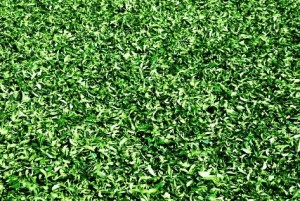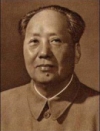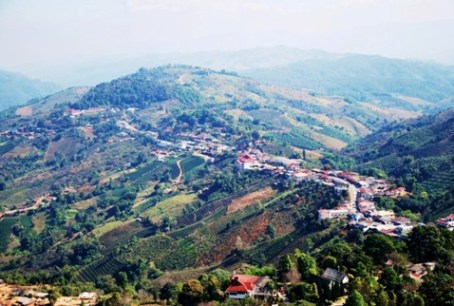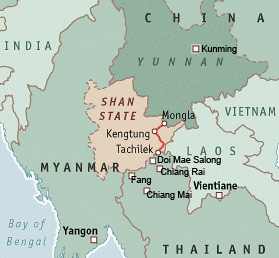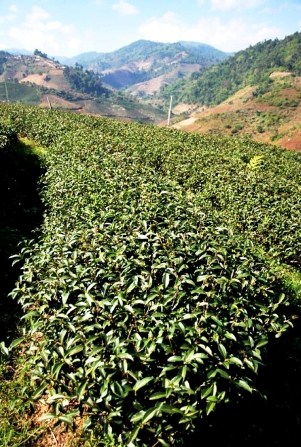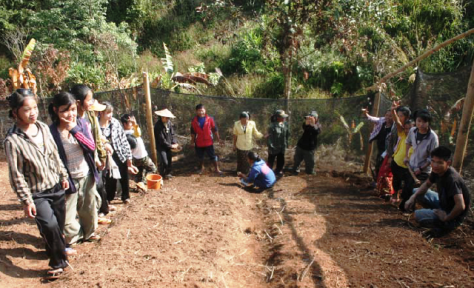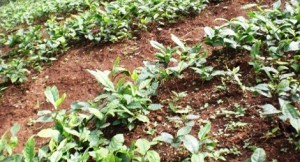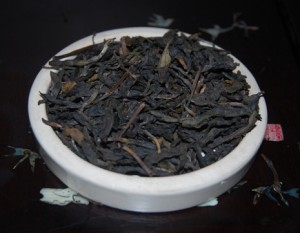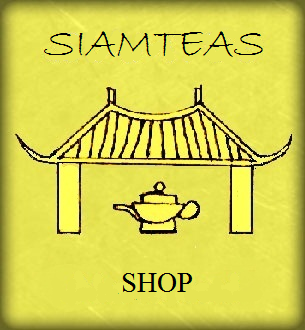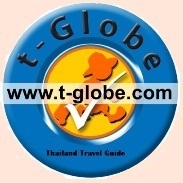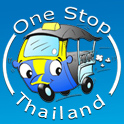Thai Tea / Tea Cultivation in North Thailand
Martin Krieger notes in his book “Tea – A Cultural History” the following:
“Some hill tribes in India, China, Thailand and Burma initially rather coincidentally discovered the stimulating, concentration-enhancing and even healing properties of the leaves of the tea plant, and the Old China their commercial potential.”
Considering the Chinese sense of business and the rootedness of tea culture and tea cultivation in the life of the North-Thai hill tribes, this version at least bears a certain degree of historical probability. Hence, we can assume that in the area today forming the border region Northern Thailand/Burma, tea was already harvested from wild growth at a very early stage by hill tribes for their own use, making the history of Thai tea reaching back much further than generally believed .
However, the tea plant’s targeted cultivation for commercial purposes in Thailand and the start of Thai tea gaining a repution on the worldwise tea market is of much more recent date, and again ethnic Chinese people played a crucial role. But this is a long story that has its beginning in 1949 …
The Kuomintang Army
Mao’s Cultural Revolution had achieved victory and the counter-revolutionary troops local to Yunnan under General Chiang Kai Shek were forced back across the Chinese-Burma border, where they initially held out in order to resume their struggle
at given time. Mao and his Communist Party, however, very quickly managed to cement their power in all parts of China. Any military action against the revolutionary army was doomed to failure, a return to China impossible. The communist revolution enjoyed a reputation for the way it treated counter-revolutionaries, if it could get hold of them.
From Burma then, splinter groups of these Chinese Kuomintang soldiers soon migrated further to Thailand and Taiwan, where they formed typical Yunnanese communities. The most important of these communities in Thailand is Doi Mae Salong, a small, picturesque town, situated at an altitude of 1800 m above sea level, amidst the magical scenery of the northern Thai mountains. The area is part of the legendary Golden Triangle, and it can be assumed that the Kuomintang Chinese of Doi Mae Salong contributed to, if not played a essential role in the flourishing opium trade, for which the Golden Triangle has earned its world-wide fame.
Doi Tung Tea / The Royal Thai Development Project
Thailand owes its comparatively early withdrawal from opium cultivation in a commercially relevant scale to its royal family, namely its monarch King Bhumibol Adulyadej Rama IX., ruling the country since 1946 and until today.
King Bhumipol, for decades a blessing for his country in many ways, recognized at an early stage that it was useless to fight the opium cultivation and trade, those times being a major part of the locals’ economic basis, only with the adoption of dedicated laws and their police and military enforcement. He realized that it wouldn’t be wise to deprive these people of their economic basis without providing them with a replacement.
In this context of replacing opium cultivation with the farming of other, more beneficial and sustainable cash crops, the higher altitudes of the north-west part of Thailand bordering Burma, where a native Thai tea variety was already growing in the form of wild tea trees, were found to be particularly suitable for the cultivation of tea. On the initiative of the Royal Development Project, experts from Taiwan were consulted to identify the Taiwanese Oolong tea cultivars most appropriate for the cultivation on the slopes of north-west Thailand’s mountains. Then, these cultivars, the Jin Xuan Oolong Nr. 12 and the Ruan Zhi Oolong Nr. 17 were imported and given to local farmers willing to shift to the cultivation of tea. Many of the people living in the ethnic melting pot North Thailand, originating from regions in China and Tibet, remembered and picked up on their own tea culture and tradition, this making the initiative falling on very fertile soi and giving momentum to a development that would eventually gain Thai tea a mark on the world map of tea.
You will find a detailed account of the Royal Development Project’s work on the Doi Tung and the resulting tea cultivation scene there in our article
“How Poppy Fields Turned Tea Gardens – The Royal Development Projects”
and our Doi Tung travel feature
“The Tea Gardens of Doi Tung – on the tracks of the Royal Development Project”.
Tea cultivation at Doi Mae Salong
Scope and sustainability of the Royal Thai agricultural projects are worldwide exemplary. This way King Bhumibhol contributed to a development that resulted in the income gained from opium cultivation in the mountain enclave being completely replaced by one from the cultivation of tea, and to a lesser extent coffee and some other cash crops within a few years. The community of Doi Mae Salong made a virtue out of necessity. The region now produces more than 200 tons of tea annually, and the quality particularly of the locally grown Oolong teas, but also the Green Teas and more recently a locally produced Thai Black Tea, for which the plants were originally imported from Taiwan, in recent years steadily increase in international reputation for the Thai teas’ distinctive, delicate flavor and health benefits.
Doi Mae Salong provides just perfect conditions for tea growing. Altitude and climate, conditions similar to those of the Taiwanese cultivation areas (from where the tea plants had been imported) are optimal for the cultivation of finest Green and Oolong teas. The region also produces tea scented with jasmine flowers, the Chinese “immortality herb” Jiaogulan, as well as Ginseng Tea and other scented teas like the exclusive Thai tea specialty ‘Cha Khao Hom’ Thai Rice Tea’ or Osmanthus Oolong Tea.
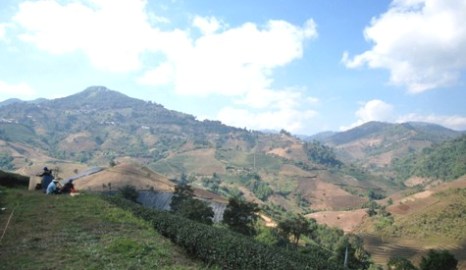
While 20 years ago Doi Mae Salong was already characterized by its street market, which seemed a homogeneous fusion of Yunnanese village idyll and tourist aspiration (snakes and other animals in alcohol along with other obscurities), that market seaming both sides of Doi Mae Salong’s main street is now coined by tea trade. The snakes in alcohol are now banned, instead now even the stalls and shops selling something else than tea at all will mainly offer tea and everything related to tea, like Chinese and Taiwanese tea sets, tea tables, tea water heaters etc. There’s a range of “tea factories” to be found on the edge of town (larger wooden sheds, on which signs with Chinese characters inscripts tell something I’ll never know what it is) and a small number of classier tourist resorts, well-hidden in order to not affect the townscape.
Doi Mae Salong is definitely worth a visit. More and detailled info in our article
Doi Wawee
Another Kuomintang Chinese settlement in Northern Thailand, located about 45 km west of Doi Mae Salong and smaller than Doi Mae Salong, is Doi Wawee. Though playing a lesser role in Thai tea production compared to Doi Mae Salong, Doi Wawee today is also mainly characterized by its tea cultivation. The initiative for the import of high quality tea plants from Tawain started from here in 1996, while Doi Mae Salong, the larger “Twin town”, jumped on the train only 2 years later.
A specialty of Doi Wawee’s tea production is the manufacturing of Pu’ Er Tea according to the traditional Chinese method.
Other Tea Cultivation Areas in Northern Thailand
Also other areas of northern Thailand disposing of the blessing of an appropriate altitude have been working successfully for some years now to gain a name as tea-growing areas, especially the regions Doi Tung and Doi Chang, mainly initiated and developed by the Royal Thai development project.
Tea cultivation in the Shan areas
The Shan people have inhabited the north-eastern regions of Burma, stretching all the way down into Thailand, for hundreds of years now. Originally originating from China, from where they probably brought the knowledge of tea cultivation, they’ve been growing tea in the Northern Thai/Burmese highland border regions for centuries now. The Shan call their plants ‘Ning Lung’. Climate, altitude and geographical properties provide ideal conditions for a particularly fine tea.
After the Burmans, the Shan are the second largest ethnic group in the multiethnic state of Burma. Like so many other ethnic groups in Burma, they’ve been suffering from the repression of Burma’s military junta against their people for more than four decades now. Human rights violations such as eviction, forced relocation, forced labor, rape and many more have been the daily fare in Shan State for a long time now. On the run from Burmese army (the “Tadmadaw”), tens of thousands of Shan refugees strand on the Thai / Burma border, where they are stuck between a rock and a hard place. The way back comes with a great risk to their lives, while any legal way into Thailand remains denied. Hence, many end up either in Thailand with the status of illegality, or arrange themselves at the border as good as the situation allows for.
Political considerations, the inaccessibility of the forested mountains of Shan State, and Burma’s anti-press policies have ensured that the issue makes the Western news all too rarely. The German refugee aid organization “Help Without Frontiers” has dedicated its work to alleviating the plight of the Shan refugees on both sides of the border and, for example, set up kindergartens and schools for children in affected communities and unofficial refugee camps (unofficial due to the lack of official ones). Help without Frontiers in this context operates a comprehensive medical aid program, for which there is huge need not only due to the ongoing military clashes between the Burma army and the various military rebel organizations, but also due to the massive abuses of the civilian population by the Burmese military. The commitment of Help without Frontiers further involves the initiation and active support of a project for the cultivation of cash crops for the sustainable improvement of income and livelihood of the refugees on the Thai side of the border as well as in Burma.
One of these cash crop projects is the cultivation of tea. Many Shan are from childhood on familiar with the cultivation of tea trees, the processing of the leaves into the tea beverage, as well as various methods of refinement and scenting. Climate and altitude were optimal and so, now more than 2 years ago, the project of clearing land for a tea plantation and planting it with tea plants was started…
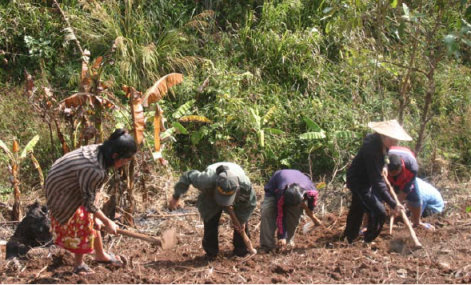
Especially the clearing of the slopes particularly suited for the cultivation is a weary effort.
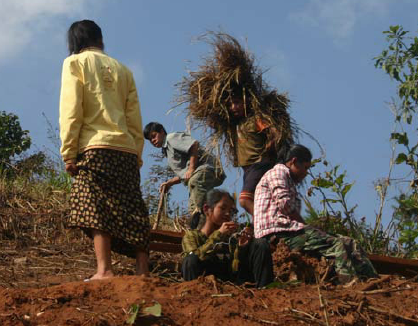
The work follows the region’s typical style: Mostly, some people are working, usually, some people are having a break, often, everybody makes a break, sometimes, everybody works. After preparing the land comes the seeding:
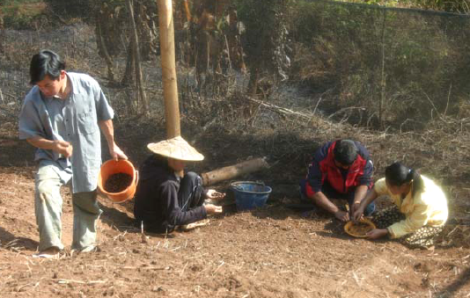
After work, all participants gather reverently at the scene of the future tea plantation.
And after not too long time, the first tea plants sprout from the soil.
Thanks to the support of Help without Frontiers, in probably no more than 2 years we will be able to offer the tea grown by the Shan people in this project for sales at SiamTeas.
In the meantime, we offer a tea we call ShanTea, harvested by Shan farmers on the Thai side of the border from wild ancient tea trees, representing not only a gain for our customers and our business, but also providing a source of direct support for the Shan farmers through the provision of a lucrative market opportunity. In addition, the sale of their tea in Germany, Switzerland and the US will indirectly, but highly targeted, benefit the Shan refugees via a percentage levy on the realized proceeds from the sale of ShanTea amounting to 20% of total sales.
The interested reader will find more and detailed information about the product ShanTea, the village of Pang Kham near the Thai/Burmese border, where the tea originates from, in my article
Pang Kham: Tea village in No-Man’s-Land
Information about our “Project ShanTea” for the generation of financial means for the active support of relief projects for Shan refugees from Burma, as well as the provision of a sales market for small Shan farmers along the Northern Thai/ Burmese border, can be found under
Articles, photos and videos and more information about the Shan Refugee Aid in Burma can be found on the Help Without Frontiers’ website
www.helpwithoutfrontiers.org


